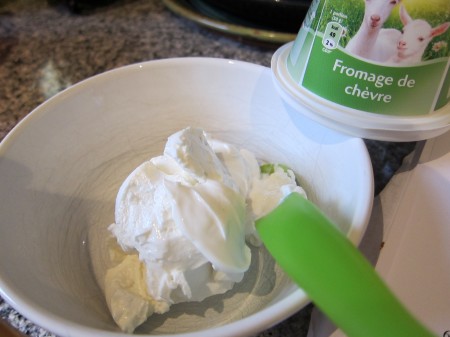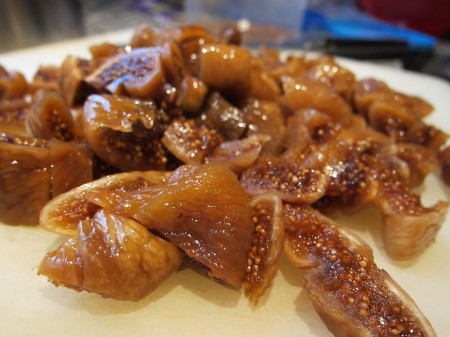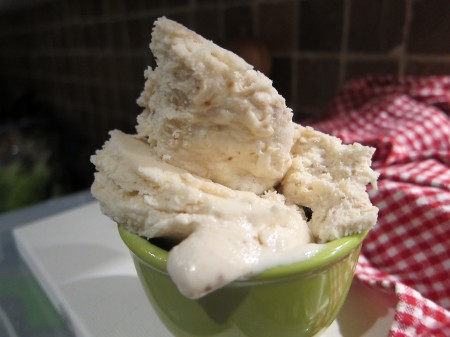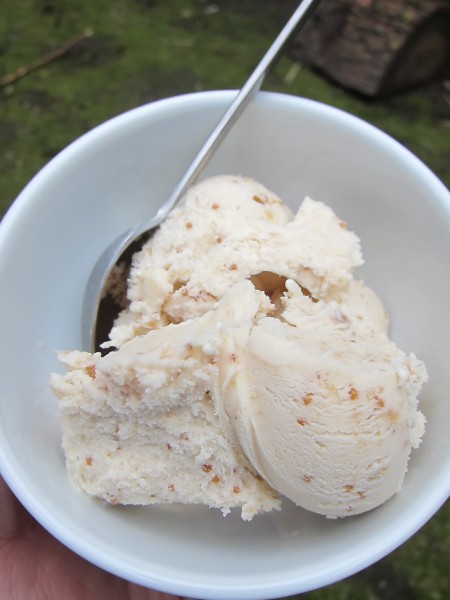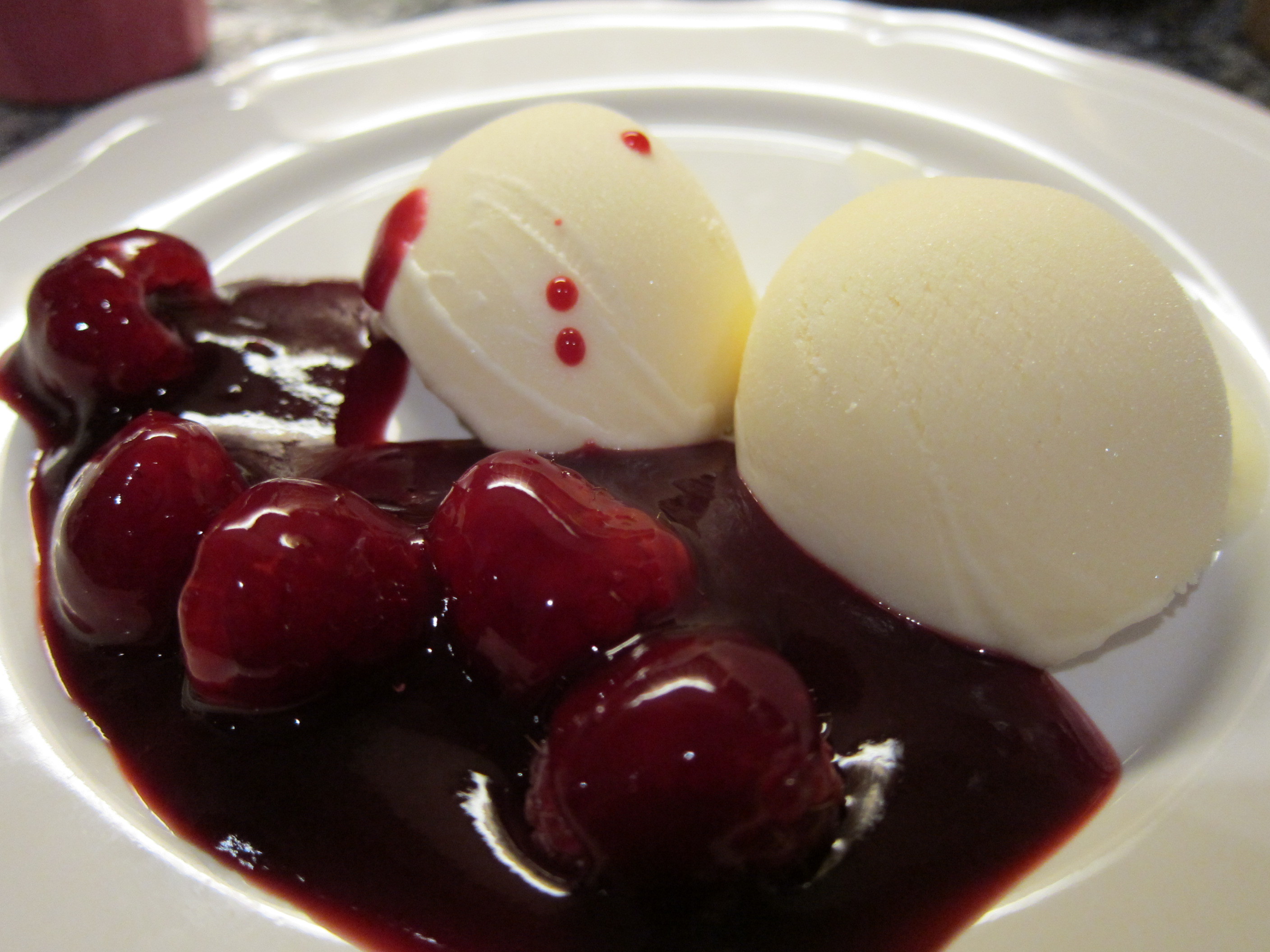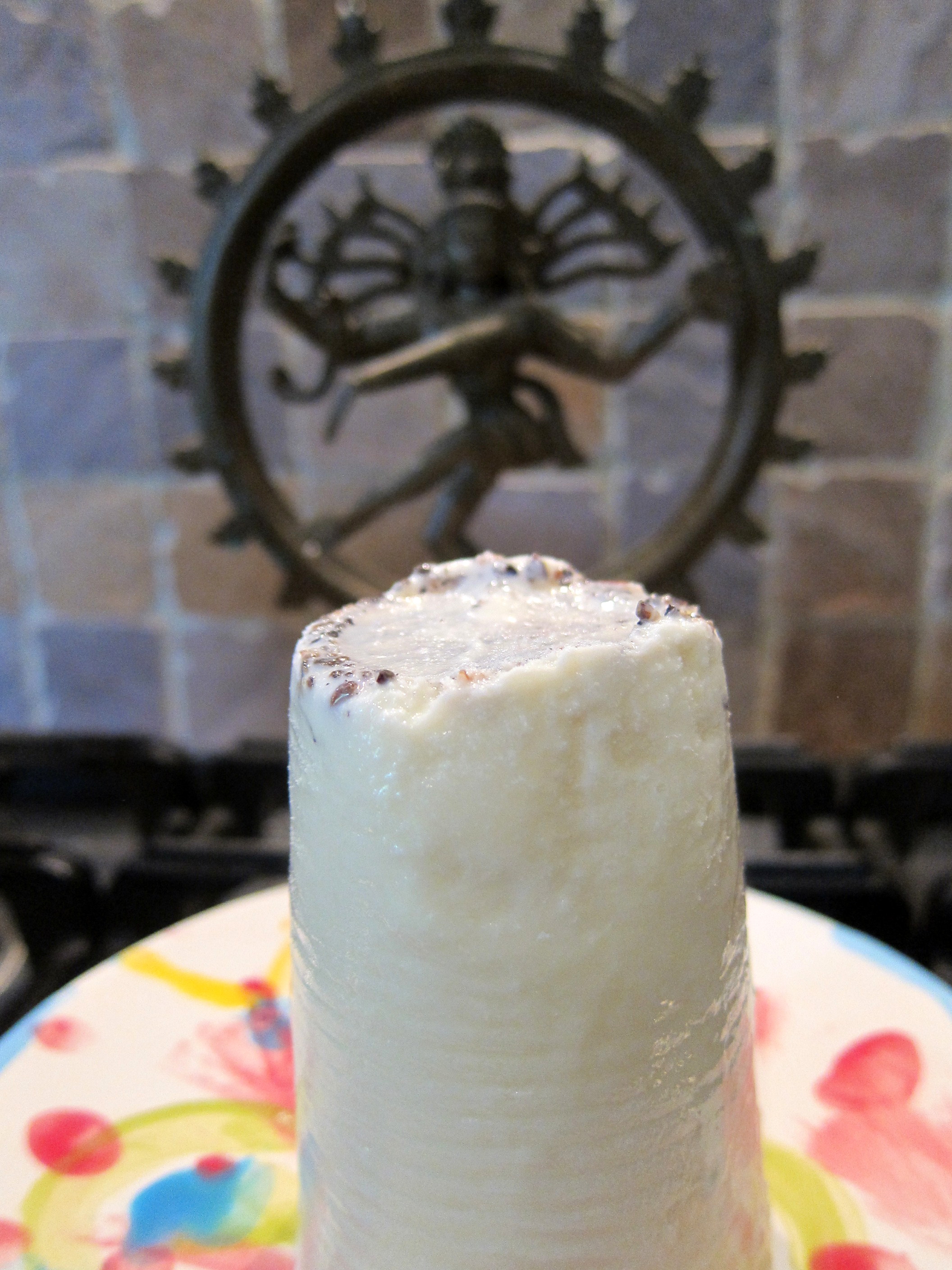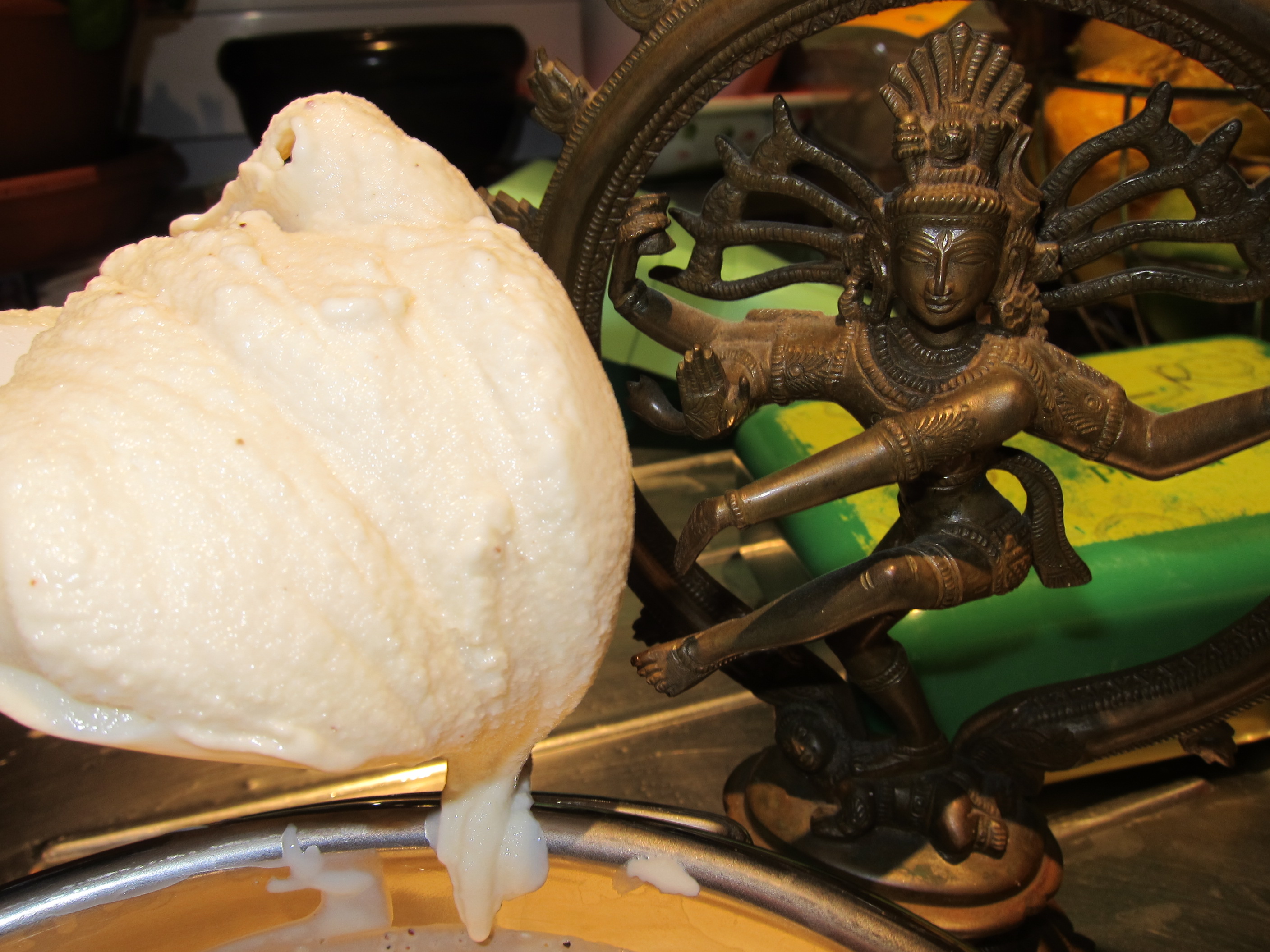Goat cheese ice cream with Cognac figs
Sometimes, too much of a good thing can be wonderful. But sometimes, it can just be too much.
This may be particularly true when speaking about acquired tastes, like those for goat cheese and for Cognac. And I’m speaking out of experience – my first attempt at this ice cream turned into an unbalanced abomination of goat cheese and unpleasantly large quantities of strong alcohol. The polite word that best described that batch was probably “overwhelming” … in a decidedly negative sense!
Yes, I should have known better but you know how it can be. Sometimes, you just get carried away in the kitchen, looking at ingredients that seem so tasty that adding more of them than planned surely only would make the dish even better, right? Anyway, here I learned a lesson about the value of moderation (at least when it comes to certain ice cream ingredients;-), and the recipe came out greatly improved.
As you probably know, dairy (as in ‘normal’ milk/cream) might sometimes be substituted for by other forms of dairy (as in cheese) when it comes to ice cream making. The following recipe is based on a combination of milk, cream and soft goat cheese. And the prominent add-in? Figs saturated in French Cognac!
How much do you like the taste of goat cheese?
If you hate it, you should obviously better pass over this ice cream completely. But even if you do like goat cheese, you probably still want to end up with “ice cream” rather than “ice cheese cream”.
Naturally, if you add too much cheese to the base, ‘ice cheese cream’ is what you will get. If you are addicted to goat cheese, this might be a good thing, even something to strive for. Being fond of goat cheese myself, I found out the hard way that too much of it in ice cream becomes too heavy and overbearing: Remember that it is easier to add some extra goat cheese if you want to strengthen the flavour later on in the process, than to reduce the flavour if you begin with too much cheese.
How much do you like the taste of Cognac in your ice cream?
The figs in the recipe are to be soaked in Cognac. Cognac is a classic French hard liquor with a distinct flavour of its own. Not only will it flavour the figs, but also the overall ice cream. Furthermore, as all alcohol, it will affect the consistency and the way the ice cream freezes.
If you add too much of the Cognac-soaked figs, there is a risk that you
(a) get an unpleasantly overbearing taste of alcohol, and
(b) end up with an ice cream that refuses to freeze.
Even if (a) does not bother you, you still need to reflect on (b). And if you happen to like Cognac so much that you do not care about either (a) or (b), why not just have some figs and a glass of Cognac on the side?
Putting it all together
So, begin by soaking the figs in Cognac for a few hours (or longer). Then, chop them up and set aside for now.
The ice cream base is egg-less but cooked on the stove, and prepared with corn starch, à la Italian gelato. To preserve the goat cheese better, it is only added towards the end of the process, just before the churning. And then, at the very end, the chopped-up Cognac figs are added (possibly even after the churning).
Depending on how much figs you add (= the final amount of alcohol involved), it may be necessary to stabilise the ice cream further by allowing it additional time in the freezer before serving it.
- 125 ml (1/2 cup) sugar
- 300 ml (300 gram / 1 cup) soft goat cheese
- 550 ml (2⅓ cups) milk
- 50 ml (1/5 cup) cream
- Pinch of salt
- 4 tablespoons of corn starch
- About 100-200 grams of figs (dried or fresh; quantity depending on your taste) saturated in French Cognac (about 4-6 tablespoons of Cognac should suffice)
- Chop the figs in smaller pieces, put them in a cup or other suitable container and pour over about 4-6 tablespoons of Cognac. Let the figs soak up the Cognac at least for a few hours in the fridge, possibly longer, stirring them occasionally during the process.
- Whisk together 200 ml (about 0.8 cup) of the milk with the corn starch, making sure that there are no lumps.
- Set aside for now. Blend the remaining milk and cream, the sugar, and the the salt in a sauce pan. Warm until steaming hot on medium heat. Now, blend in the corn starch mixture with the rest of the ingredients in the sauce pan. Barely reaching a boil, cook and stir for about five minutes, or until the mixture begins to thicken. Reduce the heat and continue to stir for another five minutes until the mixture has thickened even further and any “floury” taste (from the corn starch) has disappeared.
- Take off from the heat and let the mixture cool down. Refrigerate for a couple of hours, then whisk in the goat cheese, making sure that there are no lumps. Freeze according to the instructions of your ice cream machine (or still-freeze without an ice cream machine, as described in another post on the blog).
- Towards the end of the churning, put in the Cognac-soaked pieces of the figs. Alternatively, you could also mix them into the ice cream with a fork directly after the churning.
- Put the ice cream in a freezer-safe container, cover with plastic film and a lid, and store in the freezer.
